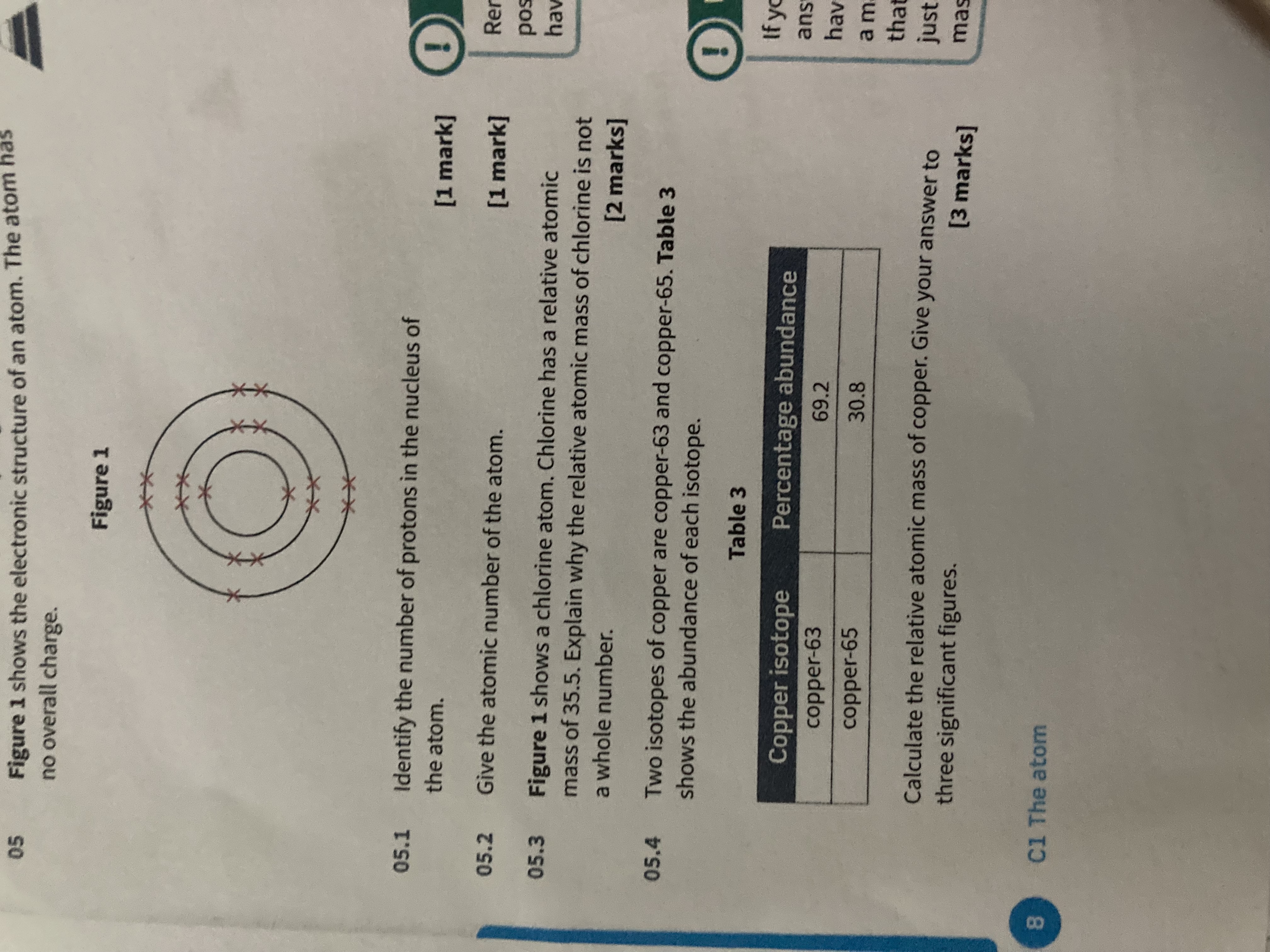05.1 Identify the number of protons in the nucleus of the atom. 05.2 Give the atomic number of the atom. 05.3 Explain why the relative atomic mass of chlorine is not a whole number... 05.1 Identify the number of protons in the nucleus of the atom. 05.2 Give the atomic number of the atom. 05.3 Explain why the relative atomic mass of chlorine is not a whole number. 05.4 Calculate the relative atomic mass of copper. Give your answer to three significant figures.

Understand the Problem
The question consists of four parts related to atomic structure and isotopes. It asks about the number of protons, the atomic number of an atom, an explanation regarding the relative atomic mass of chlorine, and a calculation of the relative atomic mass of copper based on the isotopes provided.
Answer
The relative atomic mass of copper is \(63.7\).
Answer for screen readers
The relative atomic mass of copper is (63.7).
Steps to Solve
-
Identify the number of protons (05.1)
The number of protons in the nucleus of an atom is equal to the atomic number. Since the question refers to chlorine, which has an atomic number of 17, there are 17 protons. -
Determine the atomic number (05.2)
The atomic number of chlorine is 17. This is directly related to the number of protons identified in the previous step. -
Explain the relative atomic mass of chlorine (05.3)
Chlorine has two stable isotopes: chlorine-35 and chlorine-37. Since the relative atomic mass of chlorine is a weighted average of these isotopes based on their abundances, it is not a whole number. This is due to the presence of both isotopes. -
Calculate the relative atomic mass of copper (05.4)
To find the relative atomic mass, use the formula for the weighted average: $$ \text{relative atomic mass} = \left( \frac{(\text{isotope mass}_1 \times \text{abundance}_1) + (\text{isotope mass}_2 \times \text{abundance}_2)}{100} \right) $$For copper-63 (69.2% abundance) and copper-65 (30.8% abundance): $$ \text{relative atomic mass} = \left( \frac{(63 \times 69.2) + (65 \times 30.8)}{100} \right) $$ Simplifying: $$ \text{relative atomic mass} = \left( \frac{4365.6 + 2002}{100} \right) = \frac{6367.6}{100} = 63.676 $$
-
Round to significant figures
Round 63.676 to three significant figures: $63.7$.
The relative atomic mass of copper is (63.7).
More Information
The relative atomic mass reflects the average mass of an element's isotopes, considering the proportion of each isotope naturally occurring. Copper, with its isotopes, shows how average atomic mass can vary from whole numbers due to isotope abundance.
Tips
- Confusing the number of protons with neutrons or electrons.
- Miscalculating the average by not properly weighting by abundance.
- Forgetting to round the final answer to the specified number of significant figures.
AI-generated content may contain errors. Please verify critical information